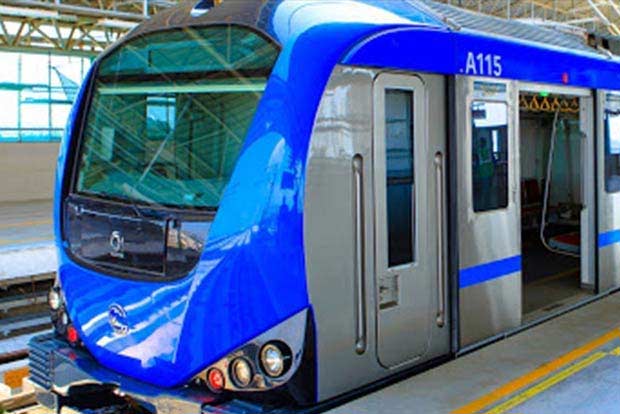Editorial: Number jugglery on Metro projects
While Madurai and Coimbatore’s claims have been rejected based on their core populations, officials in Tamil Nadu argue that the broader urban agglomerations of both cities should have been considered.

CHENNAI: Without a trace of irony, Prime Minister Narendra Modi said in Coimbatore that “the winds of Bihar have arrived in Tamil Nadu,” hinting at the forthcoming Assembly elections.
This was four days after the Union Ministry of Housing and Urban Affairs (MoHUA) rejected the State’s proposals for Metro Rail projects in Coimbatore and Madurai. Chief Minister MK Stalin articulated the disappointment of the people of both cities when he characterised the decision as a “disgrace” and “a distortion of federal principles”.
His anger is understandable because the grounds for rejection seem specious. Ostensibly, Madurai and Coimbatore do not qualify for Metro projects as their populations (1.5 million each) fall below the threshold specified in the National Metro Rail Policy, 2017, which is a minimum of 2 million people.
But then, Metro projects have been greenlighted for some cities north of the Vindhyas despite having core populations well below that baseline. These include State capitals like Patna with 1.7 million people and Bhopal (1.88 million) and tier-2 cities like Agra and Indore. In the South, a Metro Rail project is in development in Vijayawada, another below-threshold city.
This disparity, suggesting a bias against Tamil Nadu, leaves MoHUA’s decision open to the criticism that it applies the policy inconsistently based on the selective use of population data.
While Madurai and Coimbatore’s claims have been rejected based on their core populations, officials in Tamil Nadu argue that the broader urban agglomerations of both cities should have been considered. Although Coimbatore's core municipal population is 1.58 million, its planning area includes more than 2.3 million people.
Another point of contention is the continued reliance on 2011 Census data (due to the delay of the 2021 Census). Both Coimbatore and Madurai have experienced significant growth since the 2011 Census and their populations very likely exceed the benchmark now.
One indication of this is the 18.56% population increase witnessed in Coimbatore between the censuses. Madurai grew 17.5% during that decade. Based on population projections by World Population Review, Coimbatore’s urban agglomeration would currently have 3.12 million people and Madurai’s 2.14 million.
Chief Minister Stalin’s claims are not limited to numbers alone. Just as Agra deserves a Metro Rail project in view of its tourism growth, Coimbatore has a justifiable claim as an industrial and educational hub, and Madurai as a major commercial and cultural centre that attract a significant influx of students, tourists and migrant workers.
However, transport policy planners in Tamil Nadu do need to pay heed to the operational and financial challenges that often beset Metro projects, both in India and globally. The experience of Hyderabad’s Metro Rail project, popular but loss-making, should serve as caution in this regard.
After eight years of operation, the operator Larsen & Toubro has thrown up its hands due to suboptimal ridership and accumulated losses of around Rs 6,000. In the pre-operation stage, Metro projects tend to be bogged down due to delays in land acquisition and alignment challenges.
In the operational stage, ridership does not always grow to feasible proportions, and maintenance and depreciation costs become massive. The Telangana government is now left holding the baby, having to fork out Rs 2,000 crore to buy out L&T’s stake and contend with a debt of Rs 13,000 crore. Metro projects can and do become white elephants.



